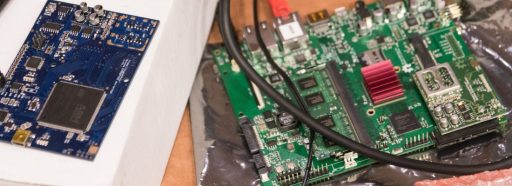Participants at the 3rd TEIN/APAN Dengue Fever workshop on 24 January in Manila reaffirmed their commitment to join forces with research and education networks to combat Dengue Fever and other infectious diseases such as Zika. Plans include developing a digital platform to exchange data and working towards an outbreak prediction model.
Think of a dance performance in which the dancers, instead of sharing the same stage, are in different cities or even other continents. That is the mission of telematics dance, approaching dancers who are not necessarily in the same physical space, and creating other experience relations with the body and technological resources.
Wouldn’t it be nice to be able to solve problems before they occur? Unfortunately, predicting the future is difficult when it comes to complex systems like industrial production lines or wind farms. But a group of European researchers and industry experts have joined forces to build a system of sensors and computers that could help us solve problems in high tech environments.
New technologies for deep sequencing of DNA and RNA are paving the way for unprecedented opportunities in genomic medicine. Norwegian medical scientists enlist the Abel supercomputer in Oslo to transform numbers and genome sequences into improved and more personalized cancer treatment.
In a unique collaboration, French research and education network RENATER will provide infrastructure connecting public administration sites from 15 ministries.
Research and education networks are not only about fibres, routers and switches. They also try to contribute to the common good of internet users. Enter CrypTech, making the Internet a little bit safer for everybody.
Finnish post-doctoral researcher Tuomo Hiippala is part of a new generation of humanist researchers, using powerful computational resources to boost their research. Combining a PhD in English Philology with a keen interest in computer vision and machine learning Hiippala is developing new ways of handling large collections of images.
Latin America plays a vital role in the worldwide computing grid essential for processing the massive amounts of data generated from particle smashing experiments at the Large Hadron Collider that reveal information about the origins of the Universe.
Three research networks are working together to provide the lifeline of a new meteorology supercomputer running on renewable energy. Through a 10 Gbps redundant fiberoptic cable running 2250 km across the North Atlantic, the Danish Meteorology Institute in Copenhagen connects to its new supercomputer located on Iceland.










